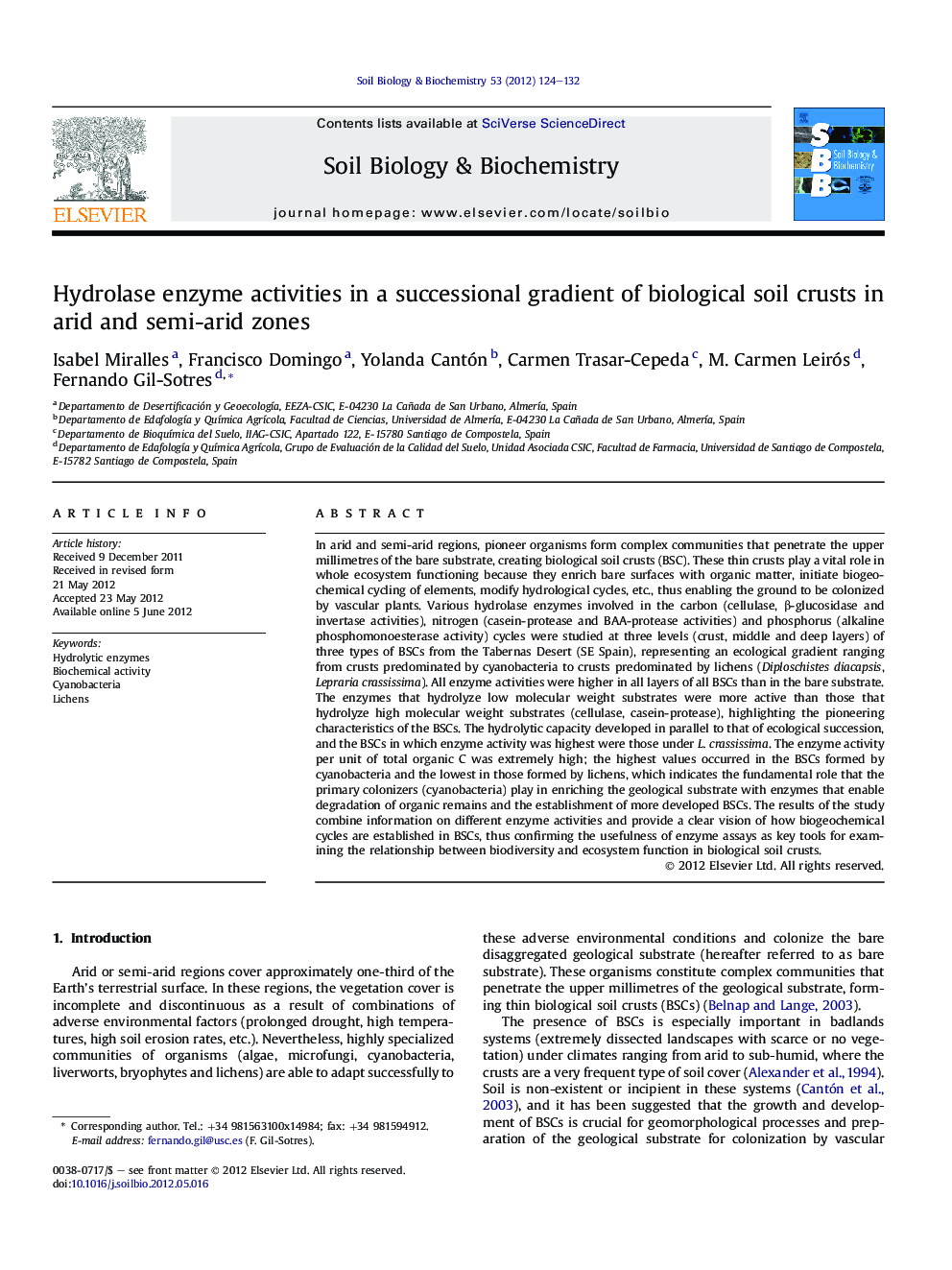| کد مقاله | کد نشریه | سال انتشار | مقاله انگلیسی | نسخه تمام متن |
|---|---|---|---|---|
| 2024922 | 1542631 | 2012 | 9 صفحه PDF | دانلود رایگان |

In arid and semi-arid regions, pioneer organisms form complex communities that penetrate the upper millimetres of the bare substrate, creating biological soil crusts (BSC). These thin crusts play a vital role in whole ecosystem functioning because they enrich bare surfaces with organic matter, initiate biogeochemical cycling of elements, modify hydrological cycles, etc., thus enabling the ground to be colonized by vascular plants. Various hydrolase enzymes involved in the carbon (cellulase, β-glucosidase and invertase activities), nitrogen (casein-protease and BAA-protease activities) and phosphorus (alkaline phosphomonoesterase activity) cycles were studied at three levels (crust, middle and deep layers) of three types of BSCs from the Tabernas Desert (SE Spain), representing an ecological gradient ranging from crusts predominated by cyanobacteria to crusts predominated by lichens (Diploschistes diacapsis, Lepraria crassissima). All enzyme activities were higher in all layers of all BSCs than in the bare substrate. The enzymes that hydrolyze low molecular weight substrates were more active than those that hydrolyze high molecular weight substrates (cellulase, casein-protease), highlighting the pioneering characteristics of the BSCs. The hydrolytic capacity developed in parallel to that of ecological succession, and the BSCs in which enzyme activity was highest were those under L. crassissima. The enzyme activity per unit of total organic C was extremely high; the highest values occurred in the BSCs formed by cyanobacteria and the lowest in those formed by lichens, which indicates the fundamental role that the primary colonizers (cyanobacteria) play in enriching the geological substrate with enzymes that enable degradation of organic remains and the establishment of more developed BSCs. The results of the study combine information on different enzyme activities and provide a clear vision of how biogeochemical cycles are established in BSCs, thus confirming the usefulness of enzyme assays as key tools for examining the relationship between biodiversity and ecosystem function in biological soil crusts.
► Hydrolase activities were studied in a successional gradient of BSCs.
► BSC caused increases in all enzymatic activities in the surface layer.
► The activity of N cycle enzymes increased more than that of P and C cycle enzymes.
► Enzymes hydrolyzing substrates of low molecular weight showed the highest activities.
► Invertase activity was higher in BSCs dominated by cyanobacteria than in other BSCs.
Journal: Soil Biology and Biochemistry - Volume 53, October 2012, Pages 124–132